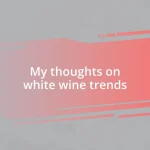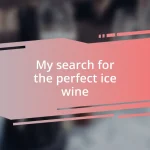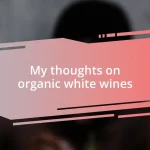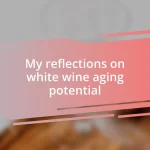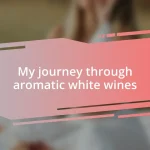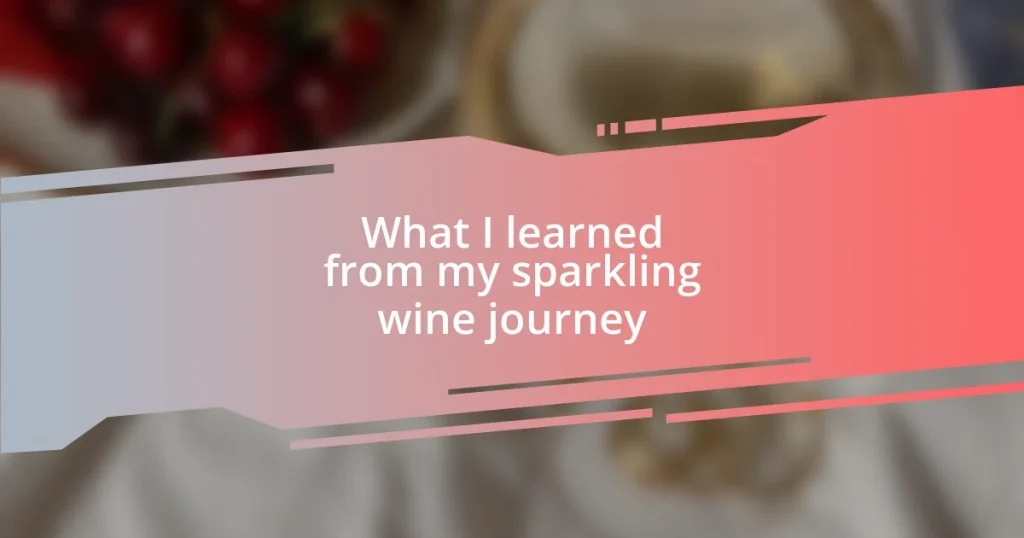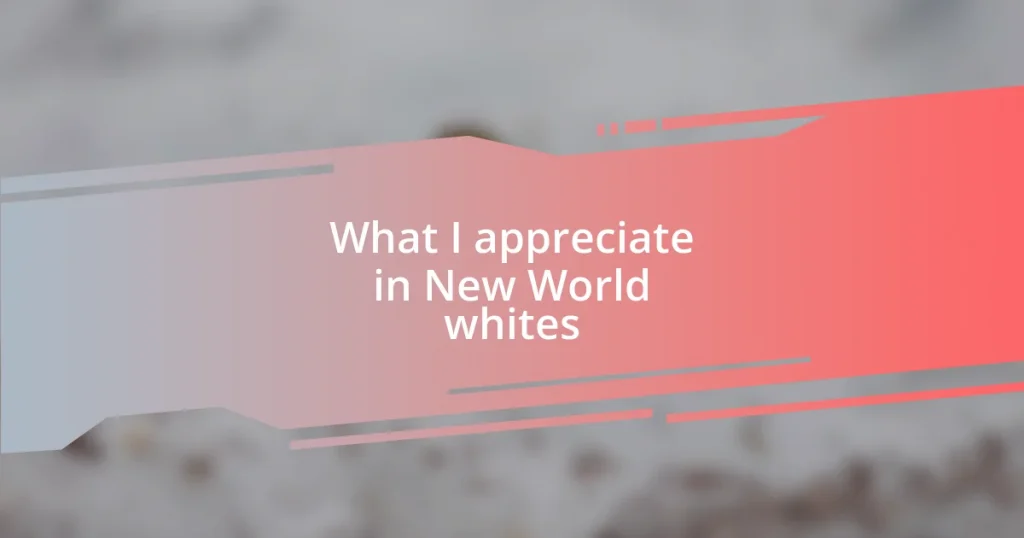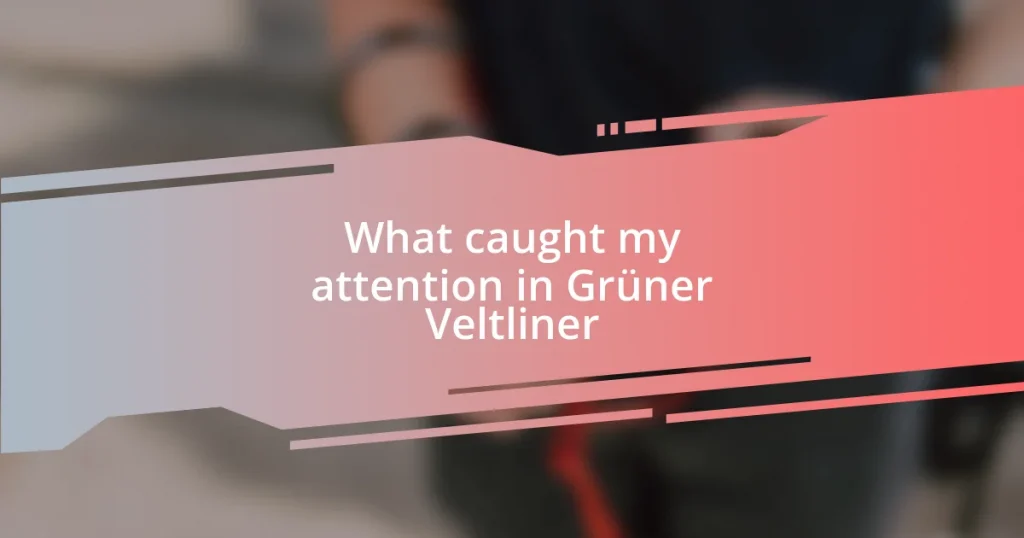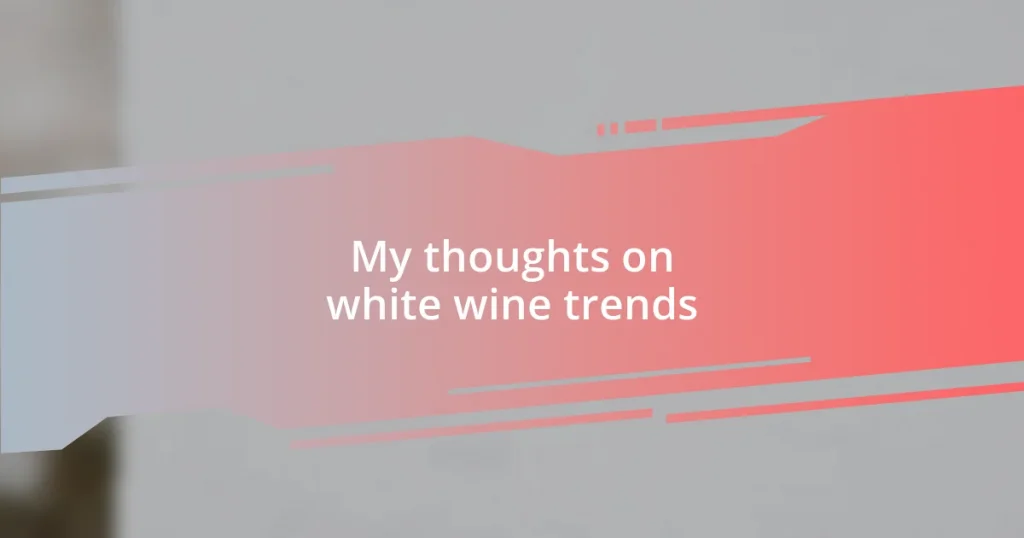Key takeaways:
- The author’s first experience with sparkling wine ignited a curiosity about its diverse flavors, aromas, and the significance of celebration it embodies.
- Different types of sparkling wines, such as Champagne, Prosecco, and Cava, offer unique characteristics influenced by their production methods and cultural contexts.
- Pairing sparkling wine with food enhances the dining experience, highlighting its versatility and ability to elevate various culinary occasions.
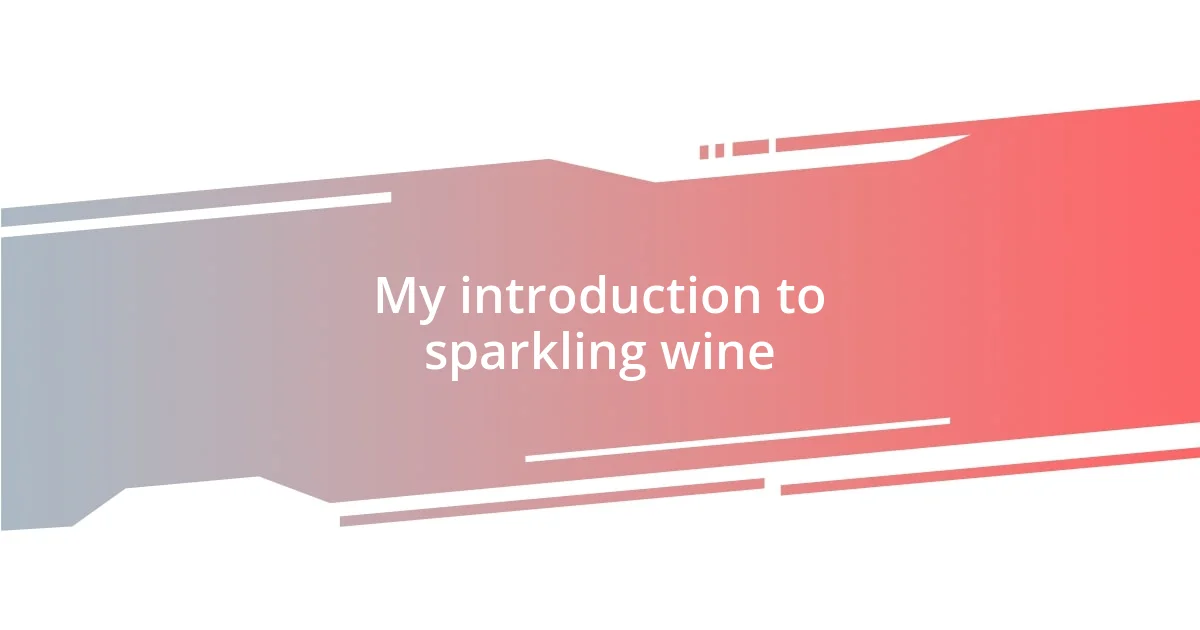
My introduction to sparkling wine
I still remember the first time I popped open a bottle of sparkling wine; the sound of the cork shooting off was like a joyous celebration. That moment sparked my curiosity, prompting me to ask: what makes sparkling wine so unique and celebrated? I felt a rush of excitement as I poured the bubbly liquid into my glass, watching the effervescence dance like tiny fireworks.
With every sip, I discovered a vast world of flavors and aromas that seemed to tell their own stories. I often found myself imagining the vineyards where the grapes were grown, the hands that harvested them, and the meticulous process that turned them into this enchanting drink. What intrigued me most was how every bottle had its own personality, like a friend you’ve just met.
As I dove deeper into this journey, I realized that sparkling wine was more than just a drink; it symbolized moments of celebration and connection. The laughter shared over a meal, the heartfelt toasts at gatherings—each experience became richer with a splash of bubbles. Have you ever thought about how a simple glass of sparkling wine can elevate even the most mundane occasions? In this exploration, I began to appreciate not just the taste, but the emotions and memories it created.
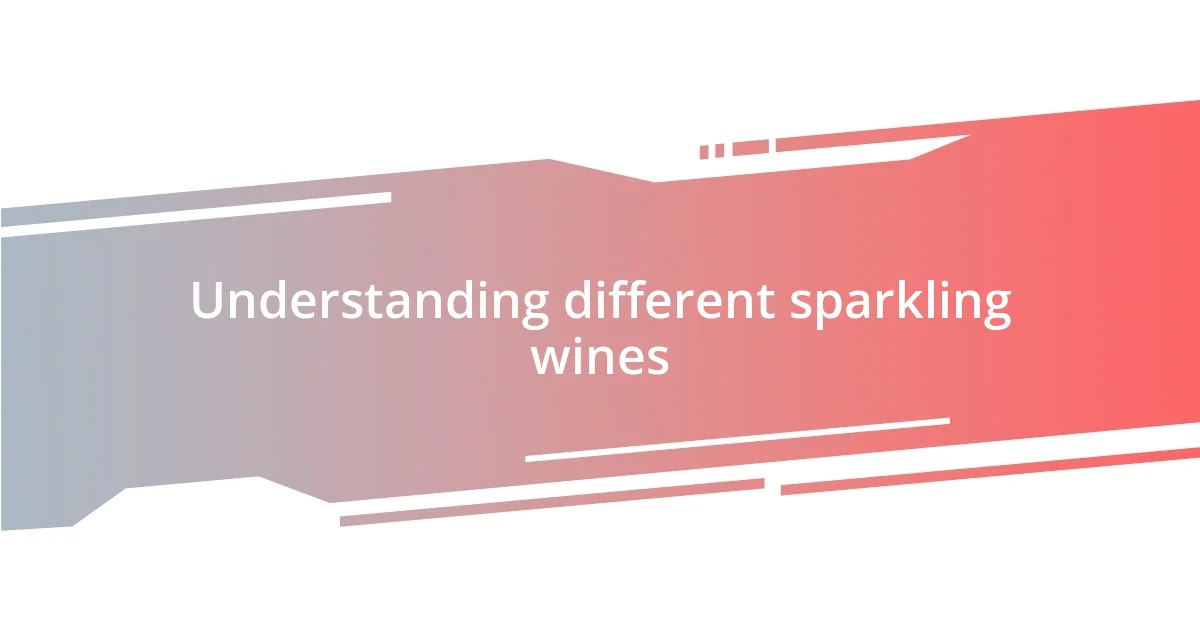
Understanding different sparkling wines
Exploring different types of sparkling wine has been one of the most eye-opening parts of my journey. Initially, I thought all sparkling wines were pretty much the same, but I quickly learned that there’s a fascinating variety. For instance, Champagne, the ultimate emblem of celebration, has a complex process known as méthode champenoise, where secondary fermentation occurs in the bottle, creating its signature depth. This meticulous method reflects the craftsmanship behind each bottle, much like an artist pouring their heart into a masterpiece.
In contrast, Prosecco offers a more accessible and vibrant profile that’s perfect for casual gatherings. Its production method, the Charmat process, results in lighter, fruitier flavors, bringing an entirely different experience to the table. I fondly recall a picnic I had with friends where we popped open a bottle of Prosecco, filling our glasses with laughter and sunshine. The difference in taste was palpable, and it helped me see how the choice of sparkling wine can set the mood for any occasion.
To wrap my thoughts about sparkling wines, I must mention Cava from Spain—it carries the elegance of its French counterpart but often comes at a friendlier price point. Each sip reminds me of summer evenings spent on the patio, where I could savor its crispness while enjoying the chirping of crickets. I found it fascinating how a region’s culture and climate influence the characteristics of the wine. Understanding these nuances has certainly enriched my appreciation for sparkling wines.
| Type of Sparkling Wine | Notable Characteristics |
|---|---|
| Champagne | Complex, rich flavors, méthode champenoise |
| Prosecco | Light, fruity, Charmat process |
| Cava | Crisp, versatile, price-friendly |
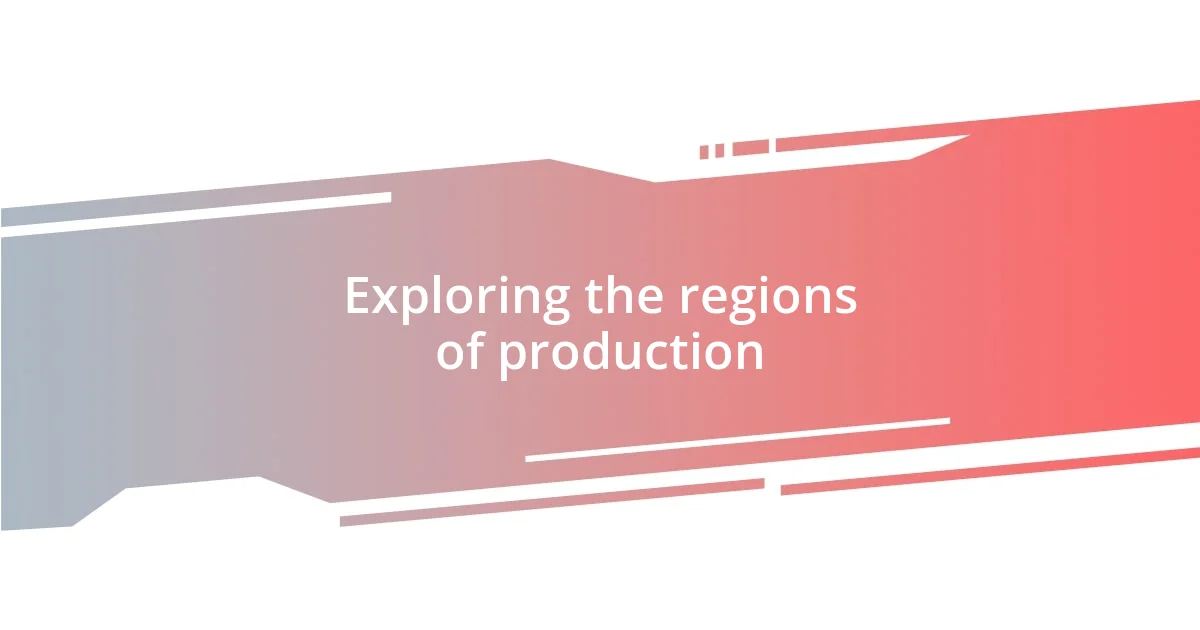
Exploring the regions of production

Exploring the regions of production
As I delved deeper into sparkling wines, I realized the significance of the regions where they are produced. Each area has its own unique terroir—this French term refers to the environmental factors that affect a crop’s phenotype. It includes things like soil composition, climate, and topography, which together contribute to a wine’s distinct character. For instance, I remember visiting the Champagne region in France; the rolling vineyards, rich chalky soil, and the crisp air felt electric. It made me appreciate why Champagne holds such a special place in the world of sparkling wines.
Additionally, the diverse regions influence not only the flavor profiles but also the cultural practices surrounding the production. From the casual, vibrant style of Prosecco in Italy’s Veneto region to the elegant Cava produced in Spain’s Penedés, I felt these wines embodied the very essence of their origin. Each bottle seemed to whisper stories of the local traditions and crafts. Consider this list of key production areas and what makes them unique:
- Champagne, France: Known for its complex flavors derived from méthode champenoise; the birthplace of sparkling wine.
- Prosecco, Italy: Lighter and fruitier due to the Charmat method; perfect for sunny afternoons and friendly get-togethers.
- Cava, Spain: A blend of traditional techniques and a more approachable price, reflecting the festive spirit of Spanish culture.
- Franciacorta, Italy: Offers a premium selection crafted in small batches, showcasing vibrant styles that rival Champagne.
- Sekt, Germany: Often known for its high acidity and aromatic profiles, made from traditional grape varieties that flourish in cooler climates.
Exploring these regions has profoundly enriched my sparkling wine journey, allowing me to make more informed choices about what to pour at my next gathering. It’s not just the bubbles; it’s the story behind each sip that truly captivates me.
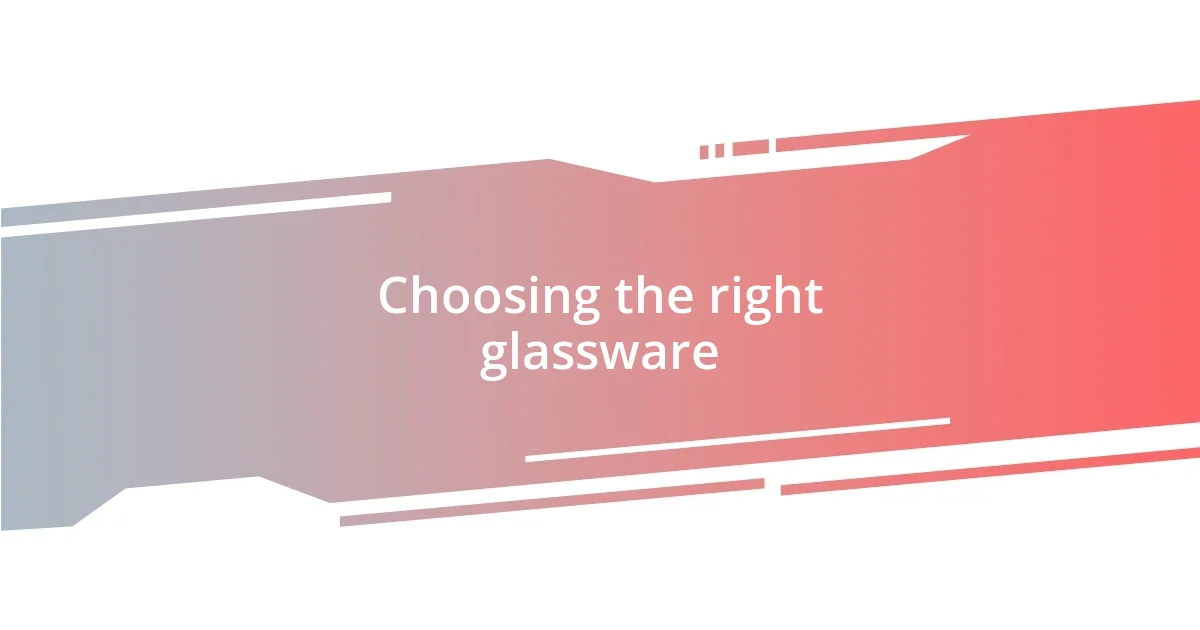
Choosing the right glassware
Choosing the right glassware can significantly enhance the experience of enjoying sparkling wine. I’ve learned that different shapes serve various purposes; for instance, flutes are often praised for preserving bubbles and focusing aromatic qualities. But here’s my personal revelation: I prefer using tulip-shaped glasses. They’re wider at the bottom and narrower at the top, allowing the aromas to concentrate while also letting the bubbles dance gracefully.
When I hosted a small gathering recently, I brought out some lovely tulip glasses, and guests were instantly drawn to them. The way the sparkling wine swirled and shimmered in those glasses felt almost celebratory in itself. It made me think—why do we often settle for standard flutes? Choosing the glass isn’t just about practicality; it’s about the entire sensory experience. Each sip should feel special, and the right glass can add that touch of elegance.
I also discovered that the glass’s material matters just as much. In my explorations, I gravitated towards crystal glasses. Their clarity enhances the visual appeal, and there’s something delightful about the weight and texture. I remember feeling a little thrill each time the glasses clinked together during toasts, just like how sound can play a pivotal role in the overall ambiance. So, next time you raise your glass, consider not just what you’re drinking, but how you’re experiencing it. It made me appreciate every aspect of the moment, and I’m sure it can do the same for you.
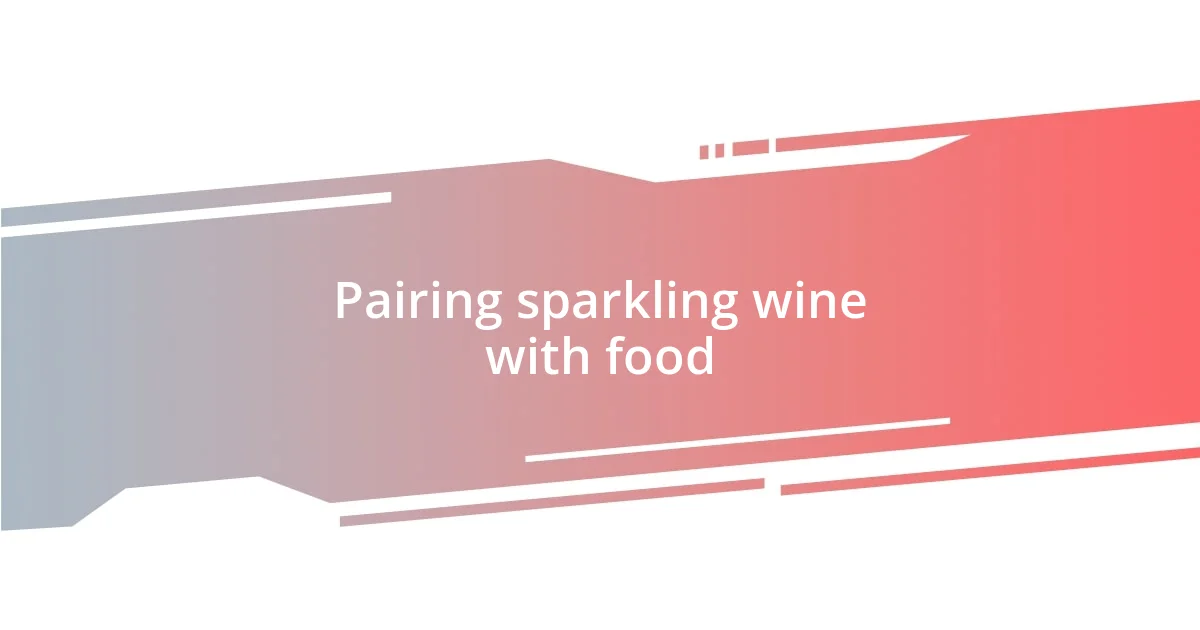
Pairing sparkling wine with food
Pairing sparkling wine with food is one of the most exciting parts of my sparkling wine journey. I recall a delightful evening when I paired a crisp Prosecco with a fresh seafood platter. The bubbles beautifully elevated the brininess of the oysters and the sweetness of the shrimp, creating a refreshing balance that felt like a celebration in every bite. It got me wondering—how often do we think about how our food and drink complement each other?
Another memorable experience happened during a casual gathering when I brought a bottle of Cava to accompany a homemade pizza. The Cava’s bright acidity cut through the richness of the cheese, enhancing the flavors without overwhelming them. I felt like I had unlocked a culinary secret, as my guests marveled at how well the pairing worked. It’s fascinating how the right sparkling wine can transform a simple meal into a gourmet experience, isn’t it?
As I’ve explored different pairings, I’ve come to appreciate that sparkling wine is incredibly versatile. From charcuterie boards to festive desserts, there’s a sparkling option for every occasion. I remember delighting in a fruity Franciacorta alongside a rich chocolate tart, the wine’s effervescence harmonizing perfectly with the indulgence of the dessert. It’s moments like these that highlight the joy of experimenting with flavors and finding the unexpected. Have you tried pairing sparkling wine with your favorite dishes? You might just discover a new favorite match!
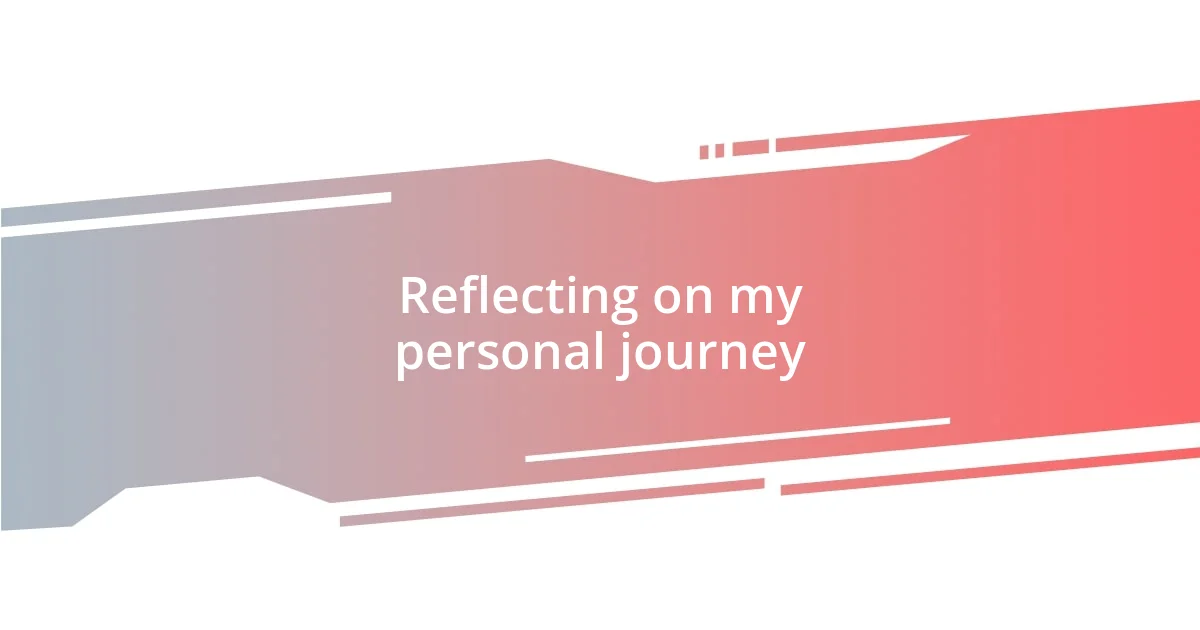
Reflecting on my personal journey
Reflecting on my personal journey has been quite the adventure filled with newfound insights. I remember the first time I opened a bottle of sparkling wine that I had carefully selected based on its region, and I felt a rush of excitement—this was not just any bottle; it was a story waiting to unfold. The moment the cork popped, I realized it wasn’t just about tasting the wine; it was about embracing the entire experience. Have you ever paused to savor the sounds and sights before taking that first sip?
Throughout my exploration, I’ve also experienced the emotional connection that sparkling wine can evoke during gatherings. Like that unforgettable birthday when my friends surprised me with a special Champagne toast. As we raised our glasses, I felt an overwhelming sense of joy and camaraderie, magnified by the delicate bubbles rising in my glass. That moment reminded me how sparkling wine adds a layer of celebration to life’s milestones, resonating deeply beyond just a drink.
As I reminisce about my journey, I realize it’s truly about growth and discovery. I’ve become more aware of the subtleties in flavor and the emotions they stir within me. Each new bottle holds the promise of another lesson, another feeling waiting to be uncovered. Have you found joy in the small details of your journey? For me, it’s the simple act of exploration that keeps the spark alive.


